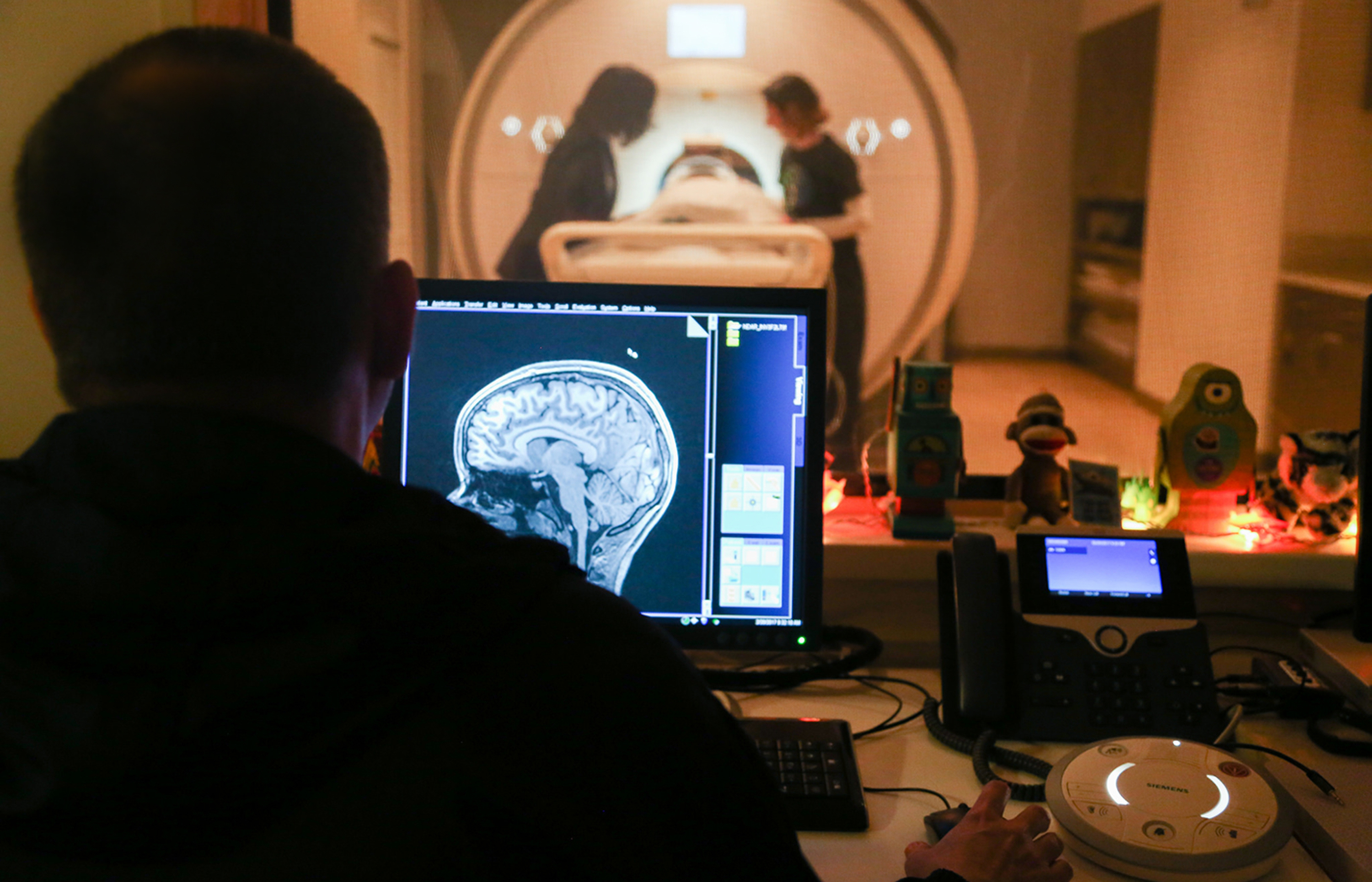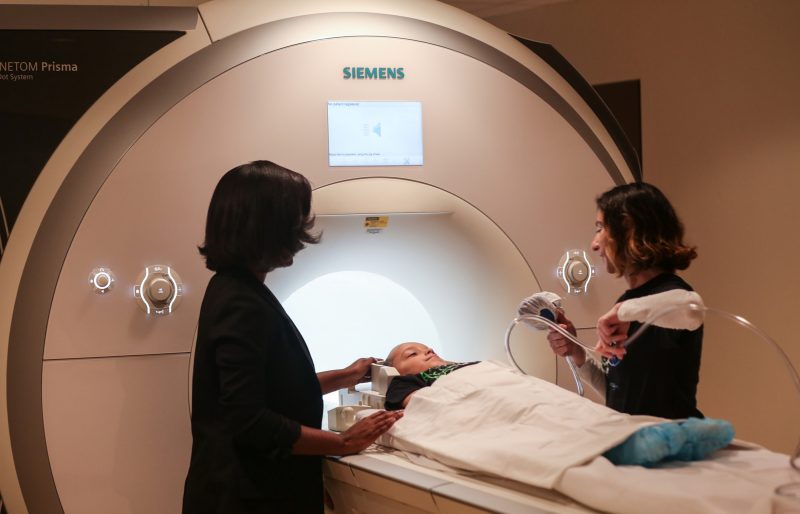NIH releases first dataset from unprecedented study of adolescent brain development
More than 7,500 children recruited for study to date; data available for first 4,500
 The National Institutes of Health (NIH) has released an unparalleled dataset from the Adolescent Brain Cognitive Development (ABCD study) — the largest long-term study of brain development and child health in the United States.
The National Institutes of Health (NIH) has released an unparalleled dataset from the Adolescent Brain Cognitive Development (ABCD study) — the largest long-term study of brain development and child health in the United States.
Approximately 30 terabytes of data — about three times the size of the Library of Congress collection — obtained from the first 4,500 participants, will be available to scientists worldwide to conduct research on the many factors that influence brain, cognitive, social and emotional development. To date, more than 7,500 youth and their families have been recruited for the study.
“This is the first of many to come from this landmark study, which has embraced its team-based, open-science model,” said Raul Gonzalez principal investigator for ABCD at FIU. “The public data release will provide an incredible level of transparency and allow scientists across the world to examine and explore all the data already collected in the service of understanding adolescent brain development and improving the lives of children and families.”
Gonzalez is associate professor of psychology, psychiatry and immunology, and a faculty member at the FIU Center for Children and Families. He is leading the 14-member research team from FIU’s College of Arts, Sciences & Education and Robert Stempel College of Public Health & Social Work. The project includes child mental health and social work experts, as well as psychologists and a physicist, who have extensive track records in drug abuse research and cognitive neuroscience.
This interim release provides high-quality baseline data on a large sample of 9-10-year-old children, including basic participant demographics, assessments of physical and mental health, substance use, culture and environment, neurocognition, tabulated structural and functional neuroimaging data, and minimally processed brain images, as well as biological data such as pubertal hormone analyses. All personally identifiable information is removed from the data to ensure participant confidentiality and anonymity.

Participants will be followed for 10 years, during which data are collected on a semi-annual and annual basis through interviews and behavioral testing. Neuroimaging data, including high resolution MRI, are collected every two years to measure changes in brain structure and function. The data is available through the National Institute of Mental Health (NIMH) Data Archive, which can be accessed by researchers who obtain a free NIMH Data Archive account.
“By sharing this interim baseline dataset with researchers now, the ABCD study is enabling scientists to begin analyzing and publishing novel research on the developing adolescent brain,” said Nora D. Volkow, M.D., director of the National Institute on Drug Abuse (NIDA). “As expected, drug use is minimal among this young cohort, which is critical because it will allow us to compare brain images before and after substance use begins within individuals who start using, providing needed insight into how experimentation with drugs, alcohol and nicotine affect developing brains.”
This comprehensive dataset, which will be disaggregated by sex, racial/ethnic group and socioeconomic status, will allow researchers to address numerous questions related to adolescent brain development to help inform future prevention and treatment efforts, public health strategies and policy decisions, including:
- How do sports injuries impact developmental outcomes?
- What are some of the factors that contribute to achievement gaps?
- How do sleep, nutrition, and physical activity affect learning, brain development and other health outcomes across racial/ethnic and socioeconomic groups?
- What is the relationship between substance use and mental illness?
- How do genetic and environmental factors contribute to brain development?
Recruitment of participants began in September 2016 at 21 study sites across the country including FIU through outreach to public, charter and private schools, as well as twin registries in Colorado, Minnesota, Missouri and Virginia. The ABCD Study is designed to include a diverse population that reflects the demographics of the U.S., however these interim data may not fully capture that diversity as enrollment is not yet complete. So far, 7,637 youth have been enrolled. The study aims to enroll a total of 11,500 children by the end of 2018. The next annual data release will include the full participant cohort.
The ABCD study is supported by the National Institute on Drug Abuse, the National Institute on Alcohol Abuse and Alcoholism, the National Cancer Institute, the Eunice Kennedy Shriver National Institute of Child Health and Human Development, the National Institute of Mental Health, the National Institute on Minority Health and Health Disparities, the National Institute of Neurological Disorders and Stroke, the NIH Office of Behavioral and Social Sciences Research, the NIH Office of Research on Women’s Health, and the Division of School Health at the Centers for Disease Control and Prevention (CDC), with additional partnerships with the National Institute of Justice, the CDC Division of Violence Prevention, the National Science Foundation, and the National Endowment for the Arts.
For more information, please visit the ABCD website at www.ABCDStudy.org.
